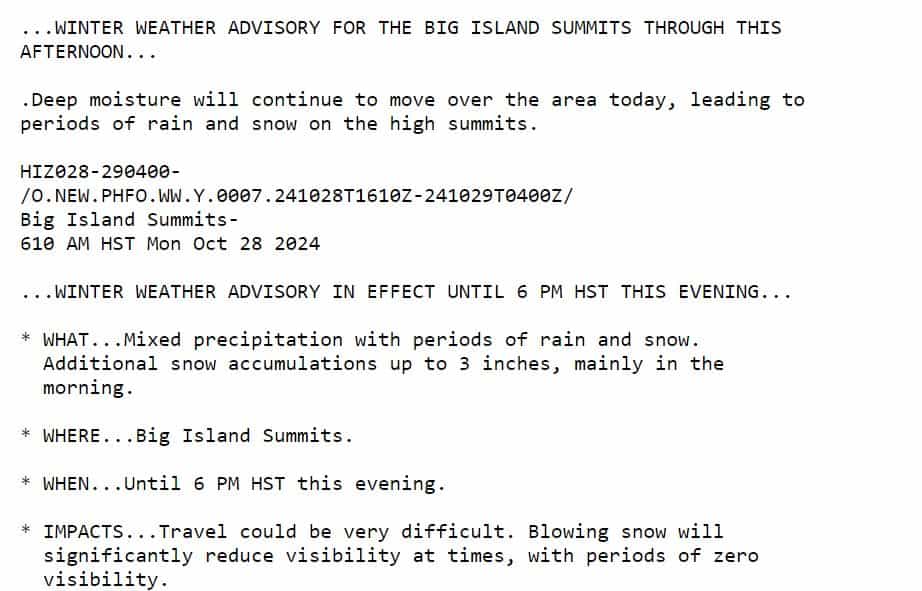
Mauna Kea in Hawaii experienced its first snow of the season on October 28. The summit, approximately 13,800 feet above sea level, received up to four inches of snow, according to the National Weather Service.
- Related: Yes, You Can Actually Ski in Hawaii
Derek Petrowski, a telescope operator at the W.M. KECK Observatory, documented the snowfall during his drive up the mountain. His footage below captured snow-clearing operations on the summit roads, which were closed due to hazardous conditions.
The Maunakea Visitor Information Station reported icy and dangerous driving conditions, prompting the closure of the summit road. Temperatures at the peak hovered around freezing, with Petrowski noting 32 degrees Fahrenheit during his drive.
The National Weather Service issued a Winter Weather Advisory for Mauna Kea and nearby Mauna Loa, warning of potential travel difficulties and reduced visibility due to blowing snow.

While snow is not uncommon on the two tallest volcanoes in the island chain, October snowfall is rare. Snow is often associated with a Kona low, when winds that typically blow out of the northeast shift and begin to blow from the southwest, over the leeward or “Kona” side of the islands. As the air, laden with moisture from the tropical Pacific, is forced up by the mountainous topography, the moisture precipitates as heavy rain and snow. Kona storms are common between October and April. A storm in January 2020 dumped up to three feet of snow, enough to ski and ride; a winter storm watch was issued in May 2021; a storm in December 2021 brought heavy snow, and storms in April and December 2022 both brought inches of snow.
As the remnants of Hurricane Kristy approach the Hawaiian Islands, forecasters predict milder conditions in the coming days. The National Weather Service in Honolulu anticipates increased moisture and instability, likely bringing rain to lower elevations.